Affiliate links on Android Authority may earn us a commission. Learn more.
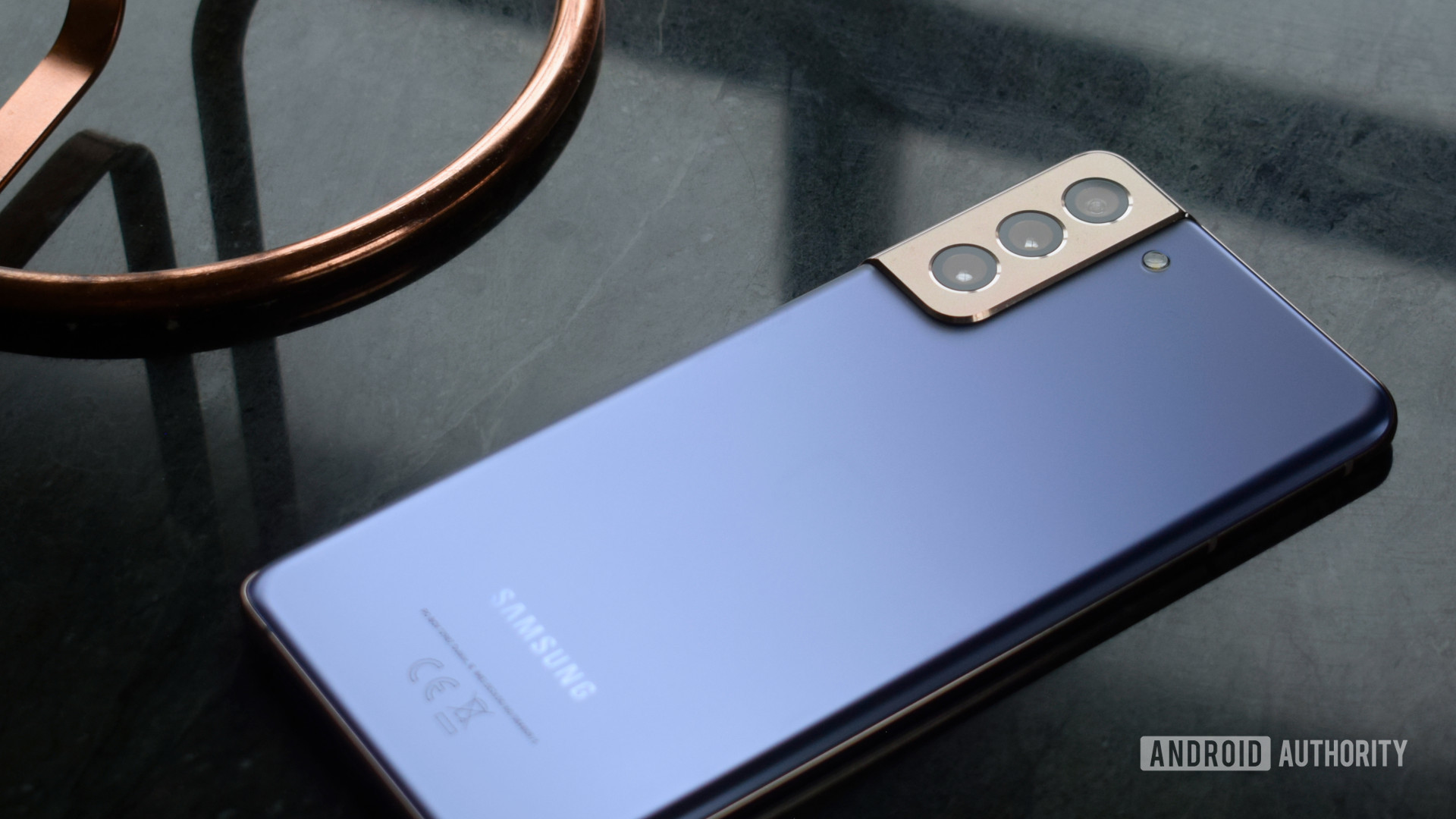
Samsung Galaxy S21 Plus review: The typical middle child
Published onMay 19, 2023
Samsung Galaxy S21 Plus
MSRP:
What we like
What we don't like
Our scores
Samsung Galaxy S21 Plus
Nestled between the affordable Galaxy S21 and super-premium S21 Ultra sits the Samsung Galaxy S21 Plus. Much of the phone’s hardware is reminiscent of the Galaxy S20 Plus. But with a revamped design and a slightly lower price point, does the Galaxy S21 Plus do enough to feel like a brand new handset worthy of your cash?
Without the affordable value proposition of its smaller sibling or the kitchen sink approach to specs with the Ultra, the Galaxy S21 Plus isn’t exactly in the spotlight this generation. Nevertheless, it’s the middle child in Samsung’s flagship portfolio that a good number of Samsung’s premium customers will have an eye on. Find out if it’s the right phone for you in Android Authority‘s Samsung Galaxy S21 Plus review.
Update, May 2023: Added details for new alternatives, and more.
Design: New look for familiar hardware
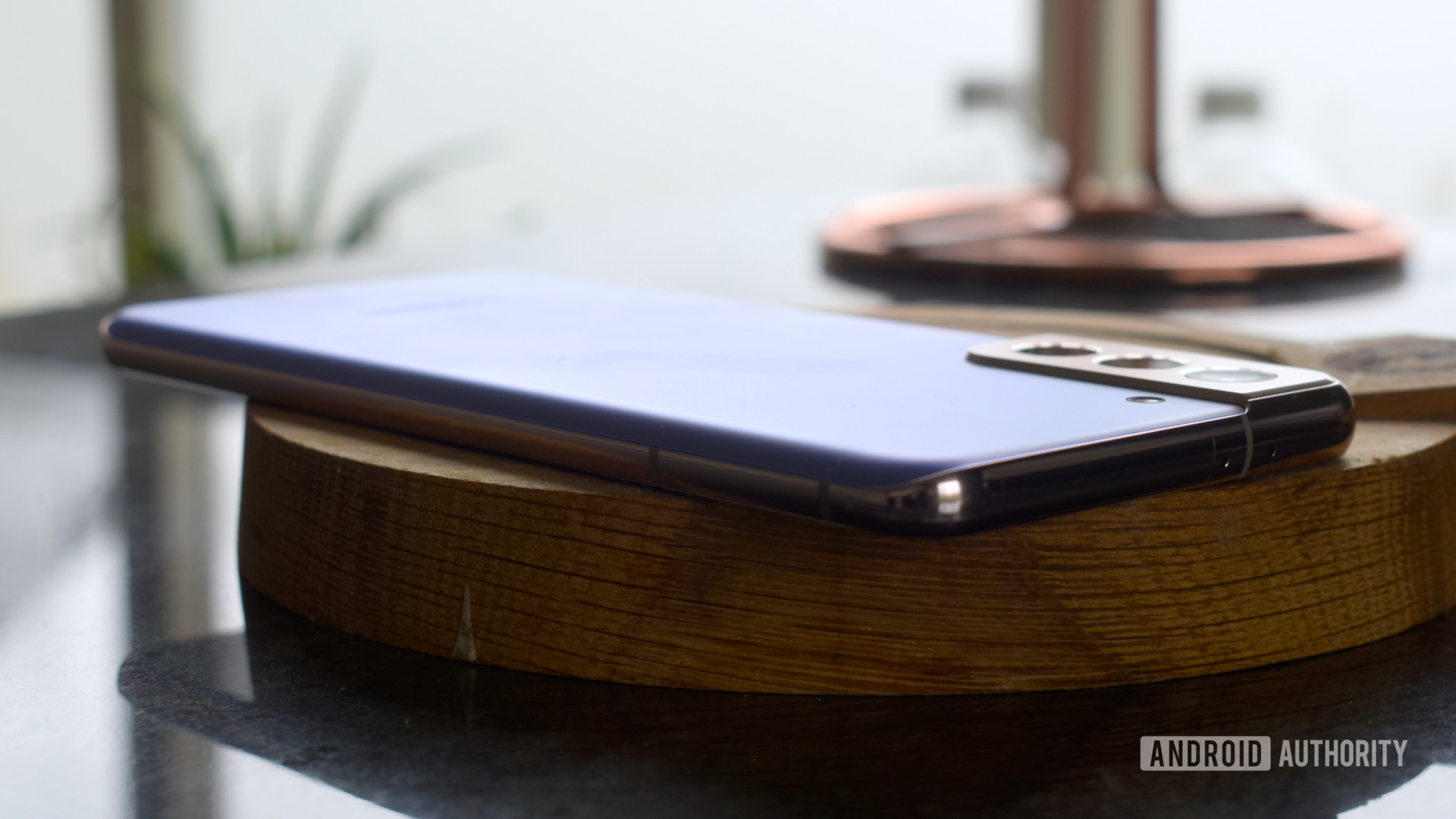
- Gorilla Glass Victus front and back
- 161.5 x 75.6 x 7.8mm
- 200g
- In-display fingerprint scanner and facial recognition biometrics
- Unique redesign and camera housing
- Flat display
- Aluminum frame
- Phantom Black, Silver, and Violet. Pink, Gold, and Red (Samsung exclusive)
The Samsung Galaxy S21 Plus flaunts a redesign that can’t help but turn heads. The new look is certainly bolder than Samsung’s previous designs and may not be to everyone’s taste. Even so, I’m quite a fan of the brash Phantom Violet colorway I’ve been using for the review, and there’s no doubting Samsung’s attention to detail and build quality. This is a very well-built smartphone.
There’s Gorilla Glass Victus on the front and back of the handset, offering solid protection from drops and cracks. Glass can be a little slippery, but that’s par for the course in the premium tier of the market. This sits in contrast to the regular Galaxy S21 with its “glasstic” rear cover. There’s also an IP68 rating for water and dust protection, which has been standard in Samsung’s flagships for generations now.
On the security side, the phone boasts an in-display fingerprint reader that works pretty snappily. Facial recognition via the front-facing camera is also supported and this works a fraction faster than the fingerprint scanner. Although both are quick and accurate enough that I didn’t experience any problems unlocking the phone. It’s worth noting that the facial unlock is all software-based and not as secure as hardware-based alternatives.
The Galaxy S21 Plus offers a very well rounded hardware package that remains a gold standard in the industry.
For the audio enthusiast crowd, there’s no return of the beloved headphone jack here. But the phone does support SBC, AAC, aptX, LDAC, and Samsung’s Scalable Bluetooth audio codecs for wireless headphones and the like. The phone’s stereo speaker setup sounds pretty good and serves up decent stereo separation. Just don’t expect to hear thumping basslines from these little tucked-away drivers. FM radio is also included too, if you’re still jamming to your tunes the old-fashioned way.
All-in-all, the Galaxy S21 Plus offers a very well rounded hardware package that remains a gold standard in the industry.
Display: Familiar Samsung brilliance
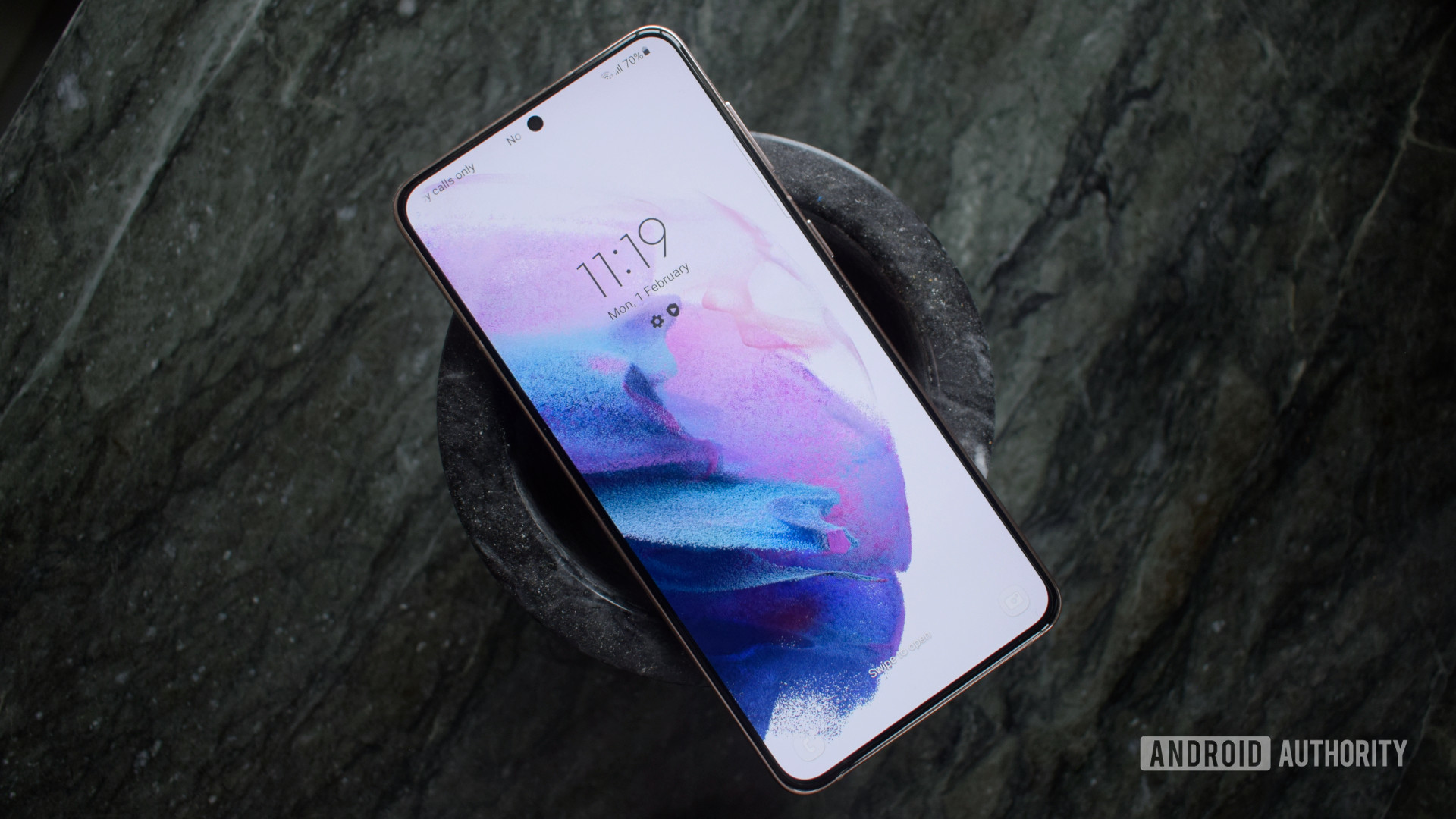
- 6.7-inch Dynamic AMOLED display
- 2,400 x 1,080 display resolution
- 394 pixels per inch
- 120Hz adaptive refresh rate, 20:9 aspect ratio
The display on the Galaxy S21 Plus is excellent and not just in terms of quality. The essentially bezel-free design and selfie camera cutout are familiar attributes of Samsung’s recent premium design ethos.
Samsung has cut back its display resolution this generation, from QHD+ (3,200 x 1,440) down to FHD+ (2,400 x 1,080) to save on costs. However, this won’t make any difference to most buyers, as the slightly older Galaxy S handsets defaulted to an FHD+ software resolution out of the box anyway. With a 120Hz adaptive refresh rate, HDR10+ content support, and bright AMOLED technology behind it, Samsung’s display prowess is as impressive as ever. Although, unlike some rival handsets, you can’t force all apps to make use of the silky smooth 120Hz refresh rate. Instead, the refresh rate is perpetually locked in adaptive mode.
Samsung's display prowess is as impressive as ever.
Whether or not you’ll miss or rejoice at the lack of curved glass boils down to personal preference. Personally, on a handset this size, I don’t mind a slight curve to assist with handling. Although at the same time, the flat design is better suited to media playback and gaming, as content doesn’t disappear and distort at the edges of the display anymore.
Performance: 5nm is fast and efficient
- Qualcomm Snapdragon 888/Samsung Exynos 2100
- Adreno 660/Arm Mali-G78 14 core
- 8GB RAM
- 128/256GB storage
The Samsung Galaxy S21 Plus is powered by the latest 5nm flagship silicon, just like the rest of the range. The Qualcomm Snapdragon 888 appears in the US and select Asian markets, while the rest of the world gets the Samsung Exynos 2100. Paired up with 8GB of RAM and 128GB or 256GB of fast UFS3.1 internal storage, you won’t be left wanting for performance here. Although unfortunately, Samsung has removed the microSD expansion slot from its entire Galaxy S21 range.
We’ve extensively tested and compared the performance of the Snapdragon 888- and Exynos 2100-powered Galaxy S21 Ultra. Those results are reflective of the Galaxy S21 Plus too. Previous years have seen a large gap between the two chip manufacturers, resulting in two tiers of performance for Galaxy S owners. The good news is that the gap has narrowed, with both phones handing in virtually identical performance for most applications. The Snapdragon 888 retains a notable lead when it comes to gaming, but even here the performance delta isn’t as great as in previous years.
The Exynos 2100 powered Galaxy S21 Plus clocked in Speed Test G benchmark times as fast as 90 seconds, with an average of 101 seconds over 10 concurrent runs. This puts it in roughly the same ballpark as the Galaxy S21 Ultra model benchmarked below. Broadly speaking though, peak performance is much better than sustained performance with this chip.
While day-to-day performance has largely felt like a solved problem for a number of generations, at least in premium smartphones, apps still feel just that bit snappier moving to these 5nm chipsets. Everything runs buttery smooth on the Galaxy S21 Plus variant I’ve been testing, from web browsing and HEVC video playback to firing up 3D games.
In fact, popular graphics benchmarks like 3DMark recommend running its newer tests, as the Mali-G78 maxes out its old scoring model. As much debate as there may be about the merits of the Snapdragon versus Exynos models, both provide next-gen performance that enthusiast consumers covet.
The Galaxy S21 Plus also supports 5G sub-6GHz and mmWave networks. Unfortunately, I don’t live in an area with 5G coverage to be able to test this out. However, based on our experience with the Galaxy S21 and Galaxy S21 Ultra, we already know that the Snapdragon 888’s fully integrated 5G modem is a solid performer. Of course, your mileage with 5G data speeds will ultimately depend on your location and carrier coverage.
Battery: Time to read up on charging standards
- 4,800mAh battery
- 25W wired charging speed (compatible chargers only)
- 15W wireless charging speed with 4.5W reverse wireless
The Galaxy S21 Plus offers exceptional battery life, much like the rest of the Galaxy S21 family. The 4,800mAh battery easily lasts through a full day of heavy use, such as snapping pictures, shooting video, and a little gaming on the go. Many users could easily see two full days of lighter use, such as web browsing and checking email.
If you’re after numbers, the Exynos Galaxy S21 Plus lasted four hours 18 minutes running our extreme Speed Test G benchmark on loop. That’s a very good result. By comparison, the Galaxy Note 20 Ultra lasted three hours and 39 minutes, and the OnePlus 8T survived three hours 51 minutes.
Controversially, there’s no charger included with the Samsung Galaxy S21 Plus. While there are genuine environmental arguments in favor of this move, the complex USB-C charging situation will likely leave many consumers with a headache.
The handset can be powered with older chargers from various brands, but to obtain the fastest 25W fast charge speed you’ll want to use one of Samsung’s 25W or 45W USB-C Super Fast Charging branded plugs (check out the article linked above for more info or our review of the 45W adapter here). We’ve also tested an extensive selection of third-party chargers, most of which charge at 15W. The exception is the Eleject 45W Super Fast Charging plug, which supports the required USB Power Delivery Programmable Power Supply (USB PD PPS) profile to charge at full speed. Ultimately fast charging the Galaxy S21 Plus is going to be a bit of a pain for a lot of consumers.
15W wireless charging is also a decent option for short top-ups throughout the day. Although Samsung’s technology is starting to fall behind the faster 30W wireless charging speeds that are quickly arriving at its competitors. The Galaxy S21 Plus doesn’t quite wirelessly charge fast enough to be a viable replacement for fast wired charging, which is a bit of a shame when there’s no plug in the box. The phone also supports reverse wireless charging at 4.5W.
Camera: Previous-gen hardware with a few new tricks
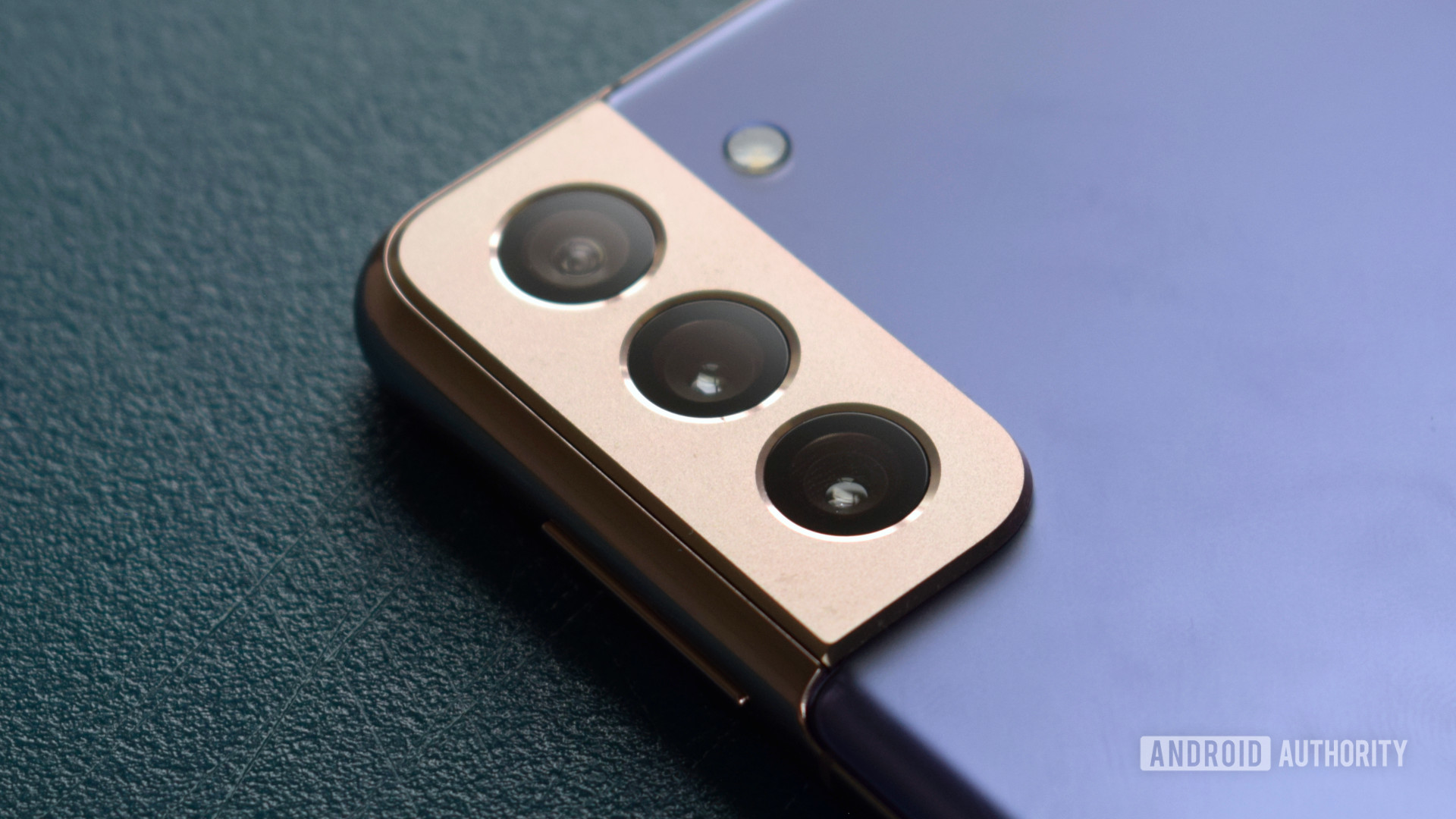
- 12MP wide-angle — ƒ1.8, 1.8μm, with dual pixel autofocus (PDAF) and optical image stabilization (OIS)
- 12MP ultra-wide — ƒ2.2, 1.4μm, with AF and a 120-degree field of view (FoV)
- 64MP telephoto — ƒ2.0, 0.8μm, with PDAF, OIS, and 3x “Hybrid Optic” zoom
- 10MP wide-angle selfie camera – ƒ2.2, 1.22μm, with dual pixel autofocus (PDAF)
- Video capture: 8K @ 24fps, 4K @ 60fps, 1080p @ 240fps, 720p @ 960fps
Camera specifications are unchanged from the Galaxy S20 Plus, so it’s the Galaxy S21 Ultra variant that photography enthusiasts will want to keep their eye on. Even so, the Galaxy S21 Plus still takes great-looking pictures that remain competitive with the best in the business. The tried and tested main, wide, and telephoto rear camera setup performs admirably and Samsung has a few new software tricks up its sleeve to help you take better pictures and video.
Colors pop as we expect from Samsung’s photos, although the level of saturation is toned down in a bit this generation. Samsung’s Scene Optimizer can be handy to spice up your shots, but turning it off produces more consistent results. Fortunately, this toggle is right there in the camera preview, so switching it on and off for Night mode, etc, is a doddle. In general, Samsung’s camera app is very easy to use with all the settings found in the usual places. Although I wouldn’t mind quicker access to shooting options like Portrait and Slow-Mo.
In good lighting, the Samsung Galaxy S21 Plus takes some sublime pictures that rival any other phone on the market. The phone’s main camera excels in HDR environments and its bokeh edge detection is pretty good, given the lack of dedicated depth detecting hardware.
Lower light capabilities aren’t quite as impressive but it remains solid enough in all but the darkest conditions. The Samsung Galaxy S21 Plus extracts a decent amount of color in dimly lit scenes, but you’ll spot a bit more noise and blurry details as the lights go down. Night Mode definitely helps out, providing you can keep your hands still, but the results are a little smudged.
Returning to flexibility, Samsung’s rather impressive hybrid zoom technology sticks around for another generation. Although the telephoto camera only has a 1.1x optical zoom, the 64MP sensor offers a 3x hybrid zoom that holds up surprisingly well to about 5x. At least in bright outdoor lighting, zoom quality definitely deteriorates in darker conditions. The Galaxy S21 Plus doesn’t fair nearly as well at 10x, but that’s probably further than most photographers will ever need to zoom in. The 30x option is… well, just don’t use it.
The Galaxy S21 Plus’ wide-angle camera is a little more hit and miss. While the field of view is great for fitting more in, there’s a distinct lack of detail and focus that isn’t quite up to par with the other two cameras. The wide-angle lens also suffers from quite a lot of perspective distortion around the picture edges, which is another blemish on an otherwise decent wide-angle camera setup.
The selfie camera is very good and the option to toggle natural and “bright” skin tones is a welcome touch. I stuck with natural to avoid Samsung’s overly-aggressive touch-ups. The Galaxy S21 Plus also offers the option to take a wide-angle selfie from its single front-facing camera. But the difference between the fields of view is so marginal as to make the feature essentially useless.
The photographs taken here will look very familiar to Galaxy S20 owners. Although the Galaxy S21 Plus does add Director View as an extra tool in its utility belt for video lovers. It’s very handy to preview the zoom levels before switching over during recording and easily adjust the front/back video split. I don’t shoot a lot of videos, but this feature is great and video quality seems every bit as good as the photography results. With support for 30fps HDR10+ recording, 8K 24fps, 4K 60fps, and 720p 960fps slow-motion video, you aren’t short of video shooting flexibility here.
Overall, the Galaxy S21 Plus is a good shooter, but the Galaxy S21 Ultra is definitely the better option to take your photography game up a notch over previous generations. You can check out the full-resolution camera samples in this Google Drive folder.
Software: One UI
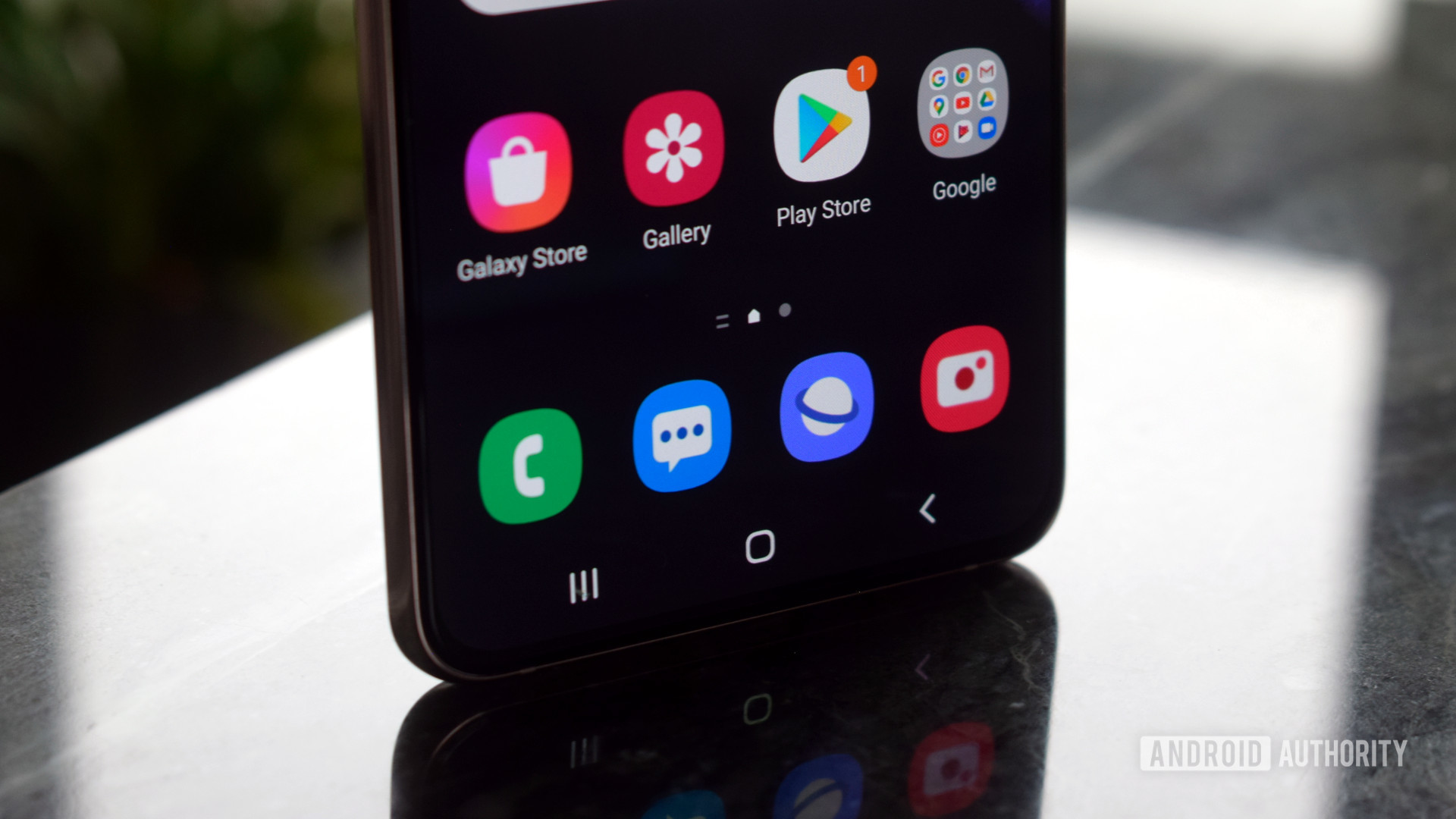
- Android 11
- One UI 3.1
- Four years of Android OS upgrades and five years of security updates
Out of the box, One UI 3.1 will look and feel very familiar to Samsung aficionados, complete with all the usual strengths and caveats. One UI mostly keeps out of the way for your day-to-day tasks. Apps open up snappily, animations zip past without a stutter, and it’s generally pretty easy to configure things just the way you want. Although it’s still too easy to become lost in the settings menu labyrinth.
Samsung introduces a couple of minor changes and new features with the move to One UI 3.1. As the name suggests, Samsung’s latest OS holds very few surprises for those upgrading from recent Galaxy handsets. Perhaps the most noticeable difference is that Google Discover can replace Samsung Free on the left-most home screen if that’s your preferred destination for daily news items.
Other new features are more subtle tweaks for existing applications. There’s a new object eraser tool tucked away under the Labs menu option when editing photos in Gallery. Samsung now supports background blurring when making video calls with apps like Duo, WhatsApp, Zoom, and others. Google Duo also supports auto-framing to keep your face centered during video calls as well. There’s a selection of animation, performance, and other tweaks dotted throughout the software too.
Samsung’s software has a few drawbacks though. It’s still relatively bloated with additional apps like Facebook, YouTube Music, and LinkedIn coming pre-installed for some reason. Doubling up on Samsung and Google Message apps out of the box is another pointless redundancy you might want to manually remedy. The Galaxy S21 Plus also removes MST payment support, leaving you with just NFC when using Samsung Pay.
Swinging back to the positives, the Samsung Galaxy S21 Plus is set to receive four years of Android OS upgrades and five years of regular security patches over its lifespan. This is even better than the three years of Android updates that the phone launched with, and cements Samsung among the best update commitments around.
While there has been some controversy over Samsung putting ads in One UI, I personally only saw a few instances of the brand plugging some of its own services in the notification bar. While they can be a bit bothersome at first, these can be turned off fairly easily.
In 2023, the Samsung Galaxy S21 Plus can be upgraded to Android 13 update in the form of One UI 5.1.
Samsung Galaxy S21 Plus Specs
| Samsung Galaxy S21 Plus | |
|---|---|
Display | 6.7-inch Dynamic AMOLED Flat FHD+ 2,400 x 1,080 at 394ppi Adaptive 120Hz refresh rate HDR10+ certified |
Processor | Qualcomm Snapdragon 888 or Samsung Exynos 2100 |
RAM | 8GB |
Storage | 128 or 256GB |
MicroSD | No |
Battery | 4,800mAh Fast wired and wireless charging Reverse wireless charging |
Cameras | Rear: - Wide-angle: 12MP, ƒ/1.8, 1.8µm with OIS and dual-pixel AF - Telephoto: 64MP, ƒ/2.0, 0.8µm with OIS and phase-detection AF - Ultra-wide: 12MP, ƒ/2.2, 1.4µm with 120-degree FoV 3x hybrid optical/digital zoom 30x "Space Zoom" Front: - 10MP, ƒ/2.2, 1.22µm, with dual-pixel AF |
Connectivity | 4G LTE support 5G (sub-6GHz, SA and NSA, mmWave) Wi-Fi 6E support |
Operating System | One UI 3.1 Android 11 |
Water resistance | IP68 |
Color | 128GB in Phantom Violet, Phantom Silver, and Phantom Black 256GB only in Phantom Black Future colors: Phantom Gold and Phantom Red |
Dimensions and weight | 161.5 x 75.6 x 7.8mm 202g |
Value and competition

- Samsung Galaxy S21 Plus (8GB/128GB): $999/€1,059/£949/Rs. 81,999
- Samsung Galaxy S21 Plus (8GB/256GB): $1,049/€1,109/£999/Rs. 85,999
Samsung struck a tempting value position with the Galaxy S20 Fan Edition and continued the price pressure with 2021’s smaller Galaxy S21. While the Galaxy S21 Plus sees a similar price cut compared to 2020’s model, it still feels a little expensive within the confines of Samsung’s smartphone portfolio. $200 more for an extra half an inch of display real-estate and 800mAh of extra battery is a tough sell over the standard Galaxy S21.
Now, there’s also the Galaxy S21 FE ($699.99 at Amazon) to consider. It’s not quite the same great value as its predecessor, yet it offers almost everything you could ask for from the Galaxy S21 family at a lower cost. You’ll get a plastic body, a trio of rear cameras, and a battery nearly as large as that of the S21 Plus.
However, the Galaxy S21 family is on its way out at this point. The Galaxy S22 series arrived in February 2022 and offers a few key updates to consider. While you get a smaller battery, the Galaxy S22 Plus ($414.78 at Amazon) is back to 45W wired charging and the primary camera now offers a 50MP resolution. The design is almost identical, though Samsung has changed the color options this year. You’ll also get a Snapdragon 8 Gen 1 chipset to power through your day. The Galaxy S23 Plus ($999.99 at Samsung) is the new wine, coming in hot with the Snapdragon 8 Gen 2 SoC globally, Gorilla Glass Victus 2 on its face, and a new selfie camera onboard.
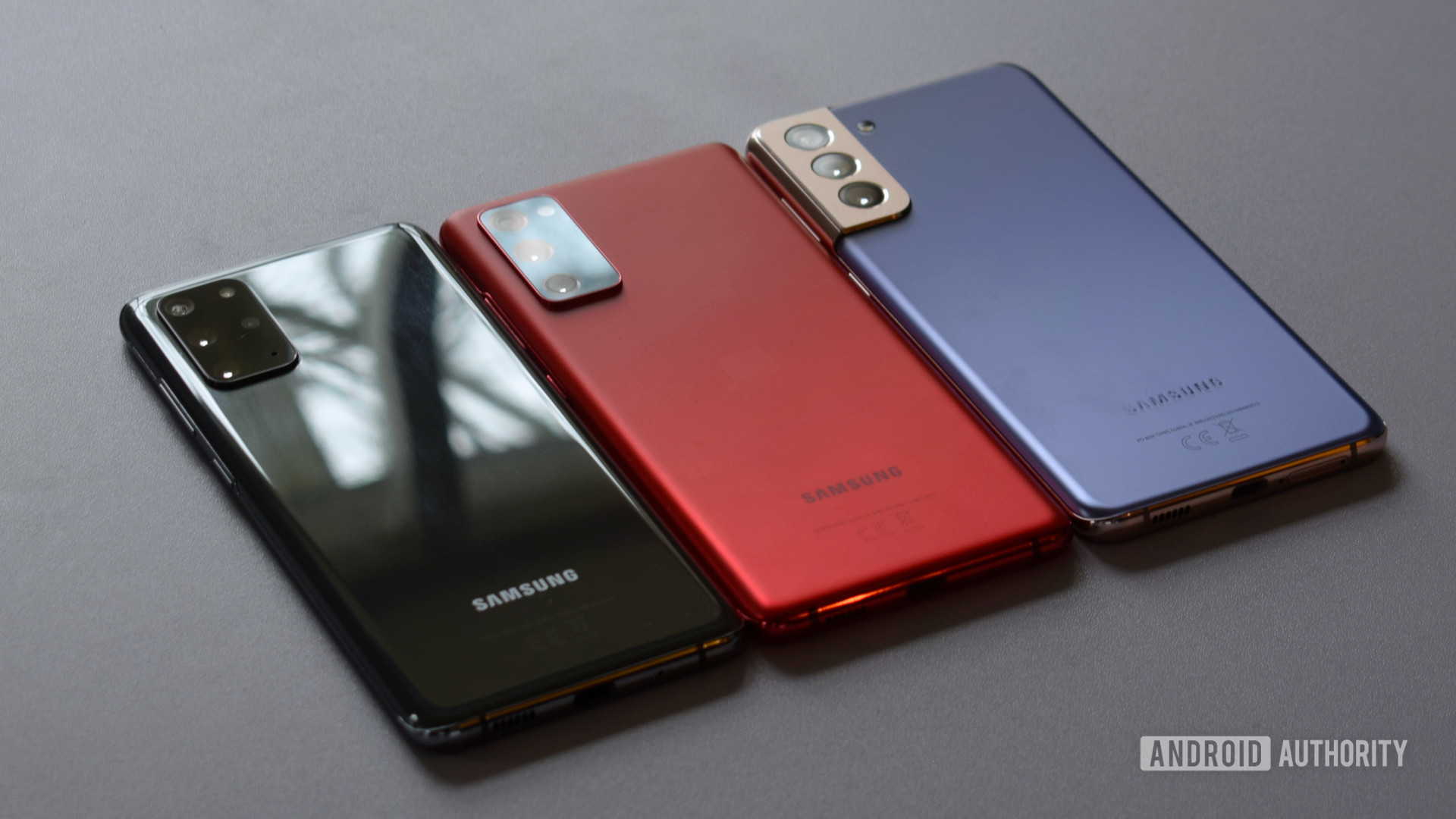
In the broader scheme of the industry, the Samsung Galaxy S21 Plus costs the same at launch as the $999 Apple iPhone 14 Pro ($799.99 at Amazon). As far as other alternatives go, Samsung’s own Galaxy Z Flip 4 ($944.45 at Amazon) makes flip phones a better buy than ever. It has the same internal power thanks to the Snapdragon 8 Gen 1 processor with a larger external display and solid camera loadout.
You can also check out the Pixel 7 ($545 at Amazon) and Pixel 7 Pro ($589.98 at Amazon) if you’re looking for Google’s latest flagships. Both include new Tensor chips as well as the biggest camera updates yet.
Samsung Galaxy S21 Plus review: The verdict
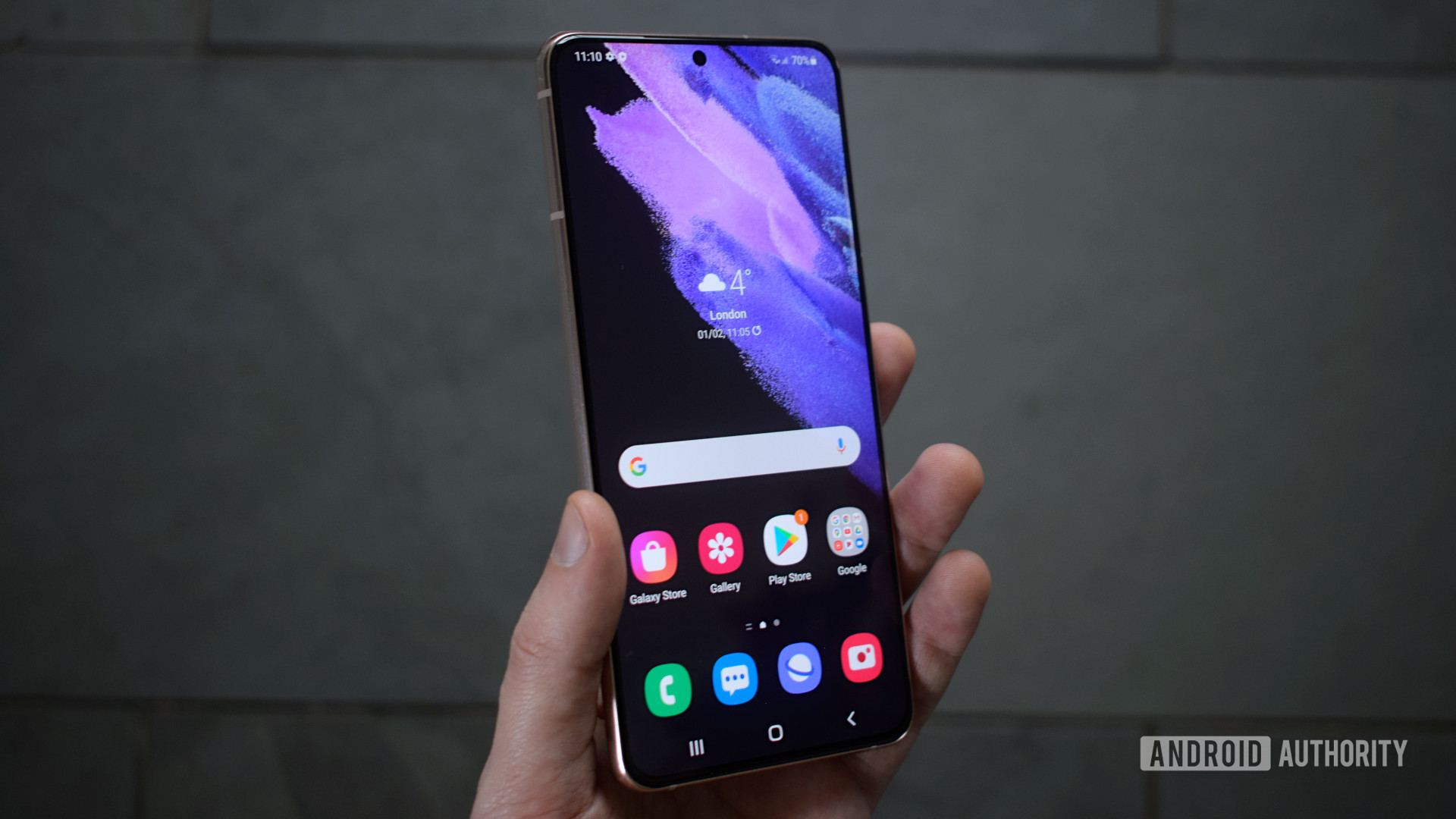
Do I like the Samsung Galaxy S21 Plus? Absolutely. Should you buy it? Well, that’s not so easy to say.
The Galaxy S21 Plus is a side-ways step for Samsung’s roadmap, will little new to offer customers over the Galaxy S20 series or even the S20 Fan Edition. Hardware enthusiasts will be disappointed with the lack of bleeding-edge technology and odd downgrade this generation in order to bring the S21 series to a more affordable price point.
Still, the Samsung Galaxy S21 Plus takes a terrific tried and tested smartphone package, doubles down on bleeding edge performance, and trims off a hefty chunk of the old price tag. If you skipped an upgrade last generation, 2021’s more affordable pricing strategy still affects Samsung flagships today.
The Galaxy S Plus lineage is as strong as ever, but the Galaxy S21 Plus is a tougher sell than in previous years.
Even so, the Galaxy S21 Plus is a much tougher sell than in previous years. If you want a Samsung flagship on a budget then the regular Galaxy S21 offers almost identical hardware at an even more attractive price point. At the same time, Samsung’s Galaxy S21 Ultra is the only game in town for those after the best of Samsung — particularly in the camera department — for “only” $200 more.